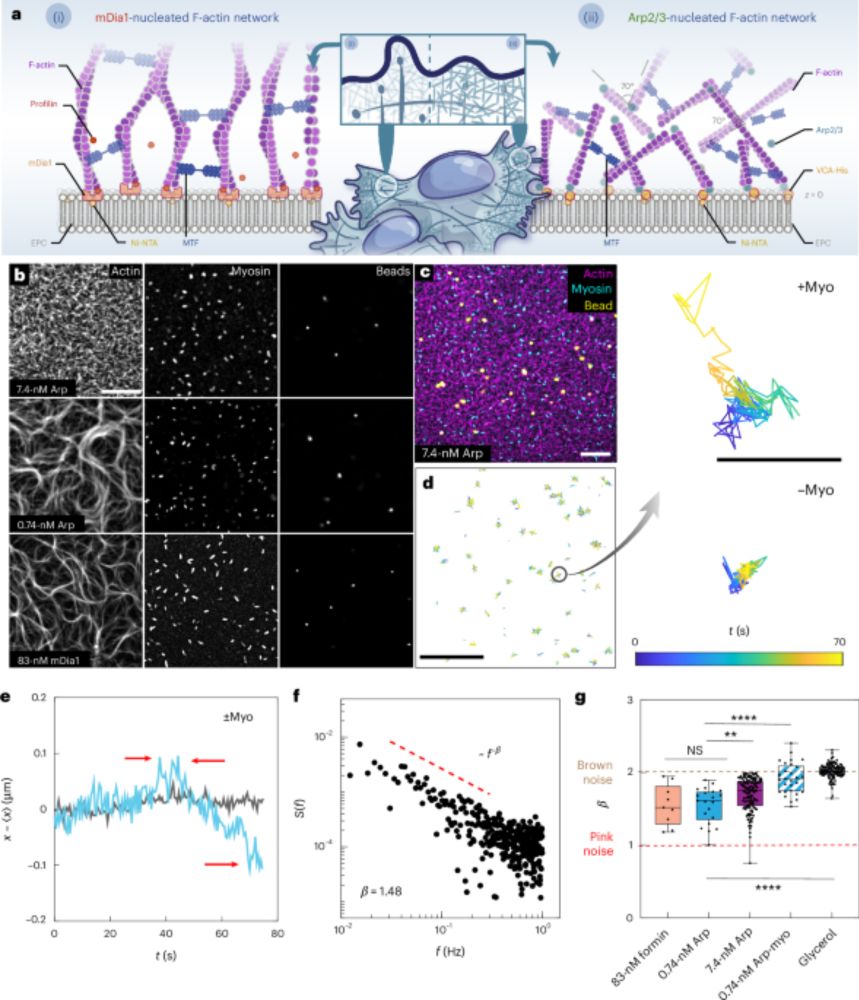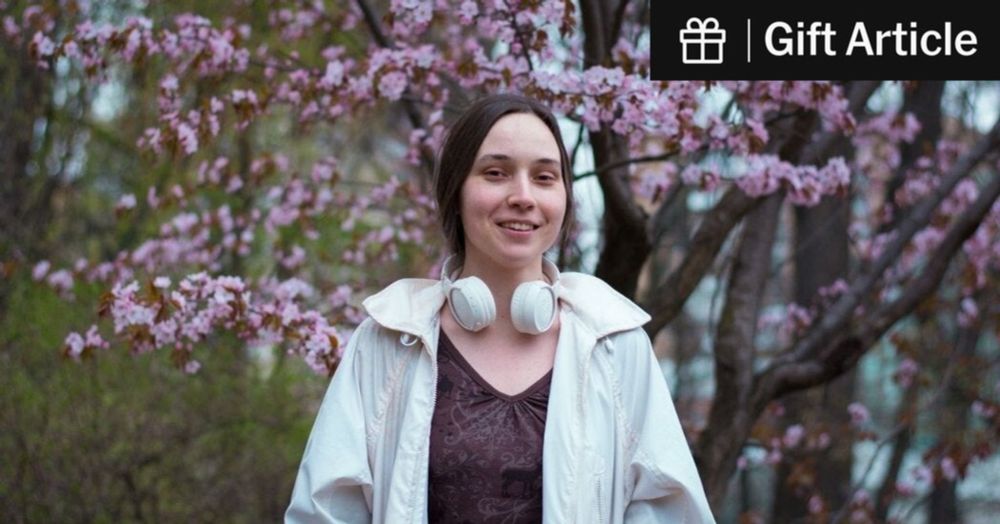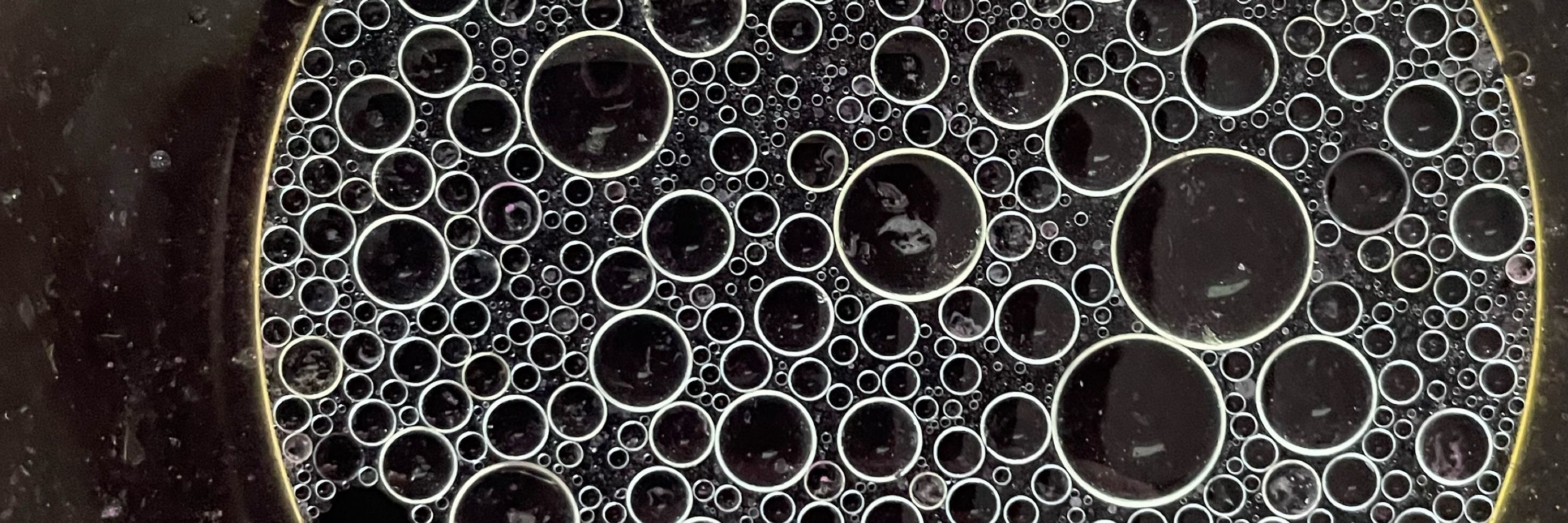Nikita Frolov 🇺🇦
@nikitaphysics.bsky.social
99 followers
180 following
25 posts
Physicist interested in complex living systems
@lendertgelens.bsky.social Lab, KU Leuven
Complex Systems | Cytoskeleton Networks | Machine Learning
Posts
Media
Videos
Starter Packs
Reposted by Nikita Frolov 🇺🇦
Reposted by Nikita Frolov 🇺🇦
Reposted by Nikita Frolov 🇺🇦
Reposted by Nikita Frolov 🇺🇦
Reposted by Nikita Frolov 🇺🇦
Reposted by Nikita Frolov 🇺🇦
Reposted by Nikita Frolov 🇺🇦
Reposted by Nikita Frolov 🇺🇦
Reposted by Nikita Frolov 🇺🇦
Reposted by Nikita Frolov 🇺🇦
Reposted by Nikita Frolov 🇺🇦
Zachary Gao Sun
@thezgs.bsky.social
· Jun 18

Feedback between F-actin organization and active stress governs criticality and energy localization in the cell cytoskeleton - Nature Physics
Self-organized criticality can occur in cellular systems, but its origins remain unclear. Now it is shown that cytoskeletal criticality is influenced by the F-actin architecture and myosin active stre...
www.nature.com
Reposted by Nikita Frolov 🇺🇦
Reposted by Nikita Frolov 🇺🇦
Bardin Lab
@bardinlab.bsky.social
· May 13
Reposted by Nikita Frolov 🇺🇦
Simone Reber
@simonereber.bsky.social
· May 12

Hierarchical Heterogeneities in Spatio-Temporal Dynamics of the Cytoplasm
Understanding of the dynamics inherent to biological matter is crucial for illuminating the physical mechanisms underlying cellular processes. In this study, we employ bright-field differential dynamic microscopy (DDM) to investigate density fluctuations inherent in a cell-free model of eukaryotic cytoplasm. Our measurements reveal subdiffusive fractional Brownian motion and non-Gaussian displacement distributions, highlighting cytoplasmic heterogeneity. We introduce an empirical model that combines fractional Brownian motion with an inverse Gaussian distribution of diffusivities to describe the observed non-Gaussianity. Validated through Monte Carlo simulations, this model allows us to estimate the fractional diffusivity and exponent effectively. By altering macromolecular composition, the addition of energy, and assembly of a cytoskeleton, we identify three independent mechanisms that result in similar fractional exponents yet distinct diffusivities. We find that energy addition leads to non-stationary dynamics, in contrast to the stationary behavior observed under passive conditions. Presence of microtubules introduces a secondary dynamical timescale, which we describe using a two-state fractional Brownian motion model to differentiate between cytosolic and microtubule network associated contributions. Our findings demonstrate the effectiveness of DDM as a label-free tool for quantifying viscoelastic and heterogeneous properties of the cytoplasm and provide insights into how physical and biochemical factors, including cytoskeletal organization, govern subcellular dynamics. ### Competing Interest Statement The authors have declared no competing interest.
www.biorxiv.org
Reposted by Nikita Frolov 🇺🇦
Maxim Greenberg
@maxvcg.bsky.social
· Apr 11

She Worked in a Harvard Lab to Reverse Aging, Until ICE Jailed Her (Gift Article)
President Trump’s immigration crackdown ensnared Kseniia Petrova, a scientist who fled Russia after protesting its invasion of Ukraine. She fears arrest if she is deported there.
www.nytimes.com
Reposted by Nikita Frolov 🇺🇦
Reposted by Nikita Frolov 🇺🇦
Oded Rechavi
@odedrechavi.bsky.social
· Jan 6















